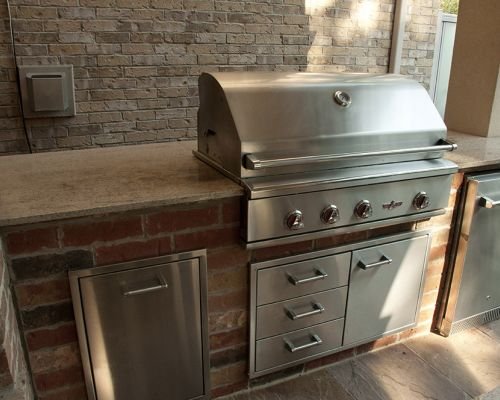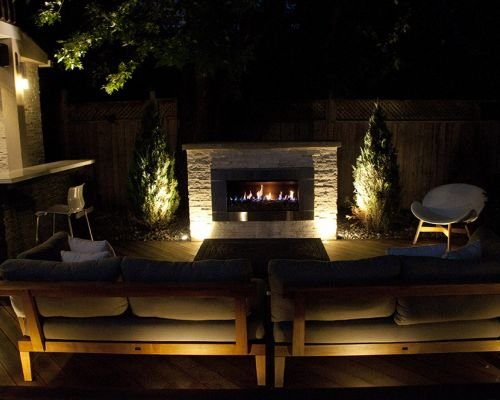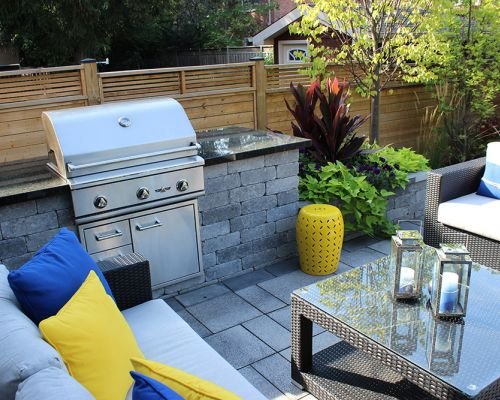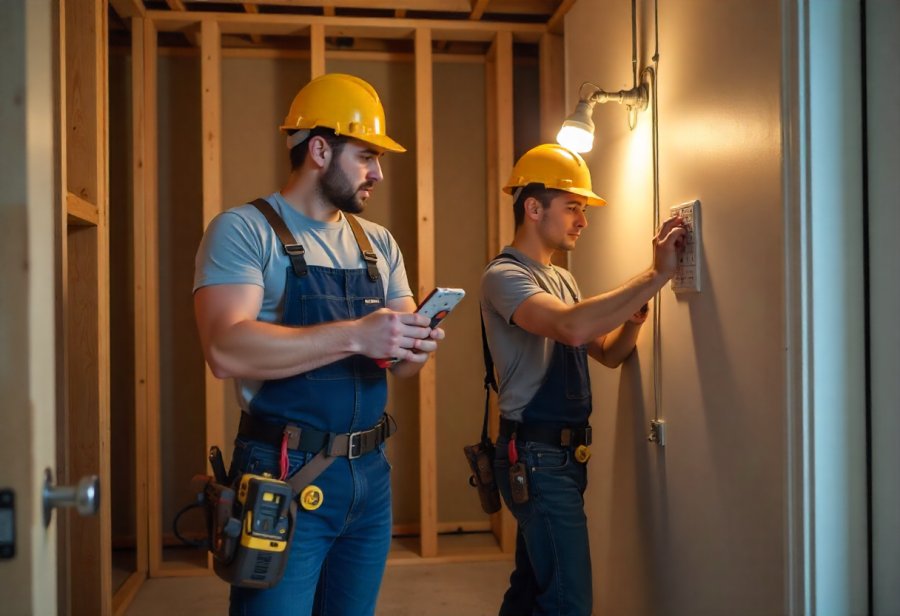Imagine transforming your Toronto yard into a stunning, sustainable oasis that perfectly balances beauty, functionality, and eco-responsibility. How can homeowners create outdoor retreats that reflect their lifestyle while withstanding Toronto’s harsh winters? This guide reveals that successful landscape design begins with understanding the site—analyzing soil, sun, and drainage—to ensure durability and harmony. Native plants, eco-friendly hardscapes, and smart irrigation systems are not just sustainable choices but vital elements that support local ecosystems and reduce maintenance. From integrating stunning water features to designing adaptable, low-impact spaces, the journey from concept to completion emphasizes collaboration, innovation, and environmental consciousness. As landscape architecture evolves, future trends promise smarter, greener solutions that make outdoor spaces more resilient and personalized. Are you ready to elevate your yard into a beautiful, responsible sanctuary that offers year-round enjoyment and ecological harmony?
Transform Your Outdoor Space with Expert Landscaping in Toronto
Looking to elevate your outdoor living area? Toronto Landscape & Design (TLD) offers exceptional backyard makeover services tailored to Toronto homeowners. Our award-winning designers meticulously consider every detail, from natural stone features and water gardens to irrigation systems and retaining walls, ensuring a stunning and functional landscape. Whether you’re seeking a peaceful retreat or a vibrant entertainment space, TLD’s expertise transforms your backyard into a personal paradise. Contact us today at 1.416.644.0499 or email mike@torontolandscapedesign.com to start your journey toward a breathtaking outdoor environment.

Transform Your Toronto Yard Into a Stunning Outdoor Sanctuary
Transforming a Toronto yard into a beautiful outdoor retreat is about more than just adding plants or installing a patio. It’s about creating a space that reflects the homeowner’s lifestyle, adds value to their property, and respects the environment. Toronto’s climate, with its cold winters and humid summers, calls for thoughtful design choices that balance beauty and durability. The goal is to craft landscapes that are not only visually appealing but also eco-friendly and functional enough to enjoy all year round.
A successful backyard transformation begins with a clear vision. Homeowners want spaces that feel inviting and personal—whether that means a cozy nook for relaxing, a lively area for socializing, or a garden for growing food. Understanding these priorities helps designers develop plans that seamlessly blend aesthetics with everyday needs. When a yard aligns with how homeowners live, it becomes more than just a pretty space; it becomes an extension of their home.
Designing for Toronto’s environment also involves careful consideration of soil quality, sun exposure, and drainage. Native plants are a smart choice—they’re adapted to local conditions, require less water, and support local ecosystems. Hardscapes like patios and walkways must withstand freeze-thaw cycles, so durability is key. These practical elements lay the foundation for a landscape that’s sustainable and low-maintenance, ensuring it remains beautiful over time.
Creating harmony in the yard isn’t just about plant placement. Layout and flow matter just as much. Pathways should guide natural movement, focal points like water features or fire pits should attract attention, and seating areas should invite relaxation. When these components come together, the outdoor space feels cohesive, welcoming, and tailored to how the homeowner wants to use it.
Sustainability runs through every step of the design process. Choosing water-efficient irrigation, native drought-tolerant plants, and eco-friendly materials for hardscapes reduces environmental impact. Incorporating rain gardens and permeable pavers helps manage stormwater naturally. These choices not only conserve resources but also support local biodiversity, making the yard a source of pride and responsibility.
Creating a stunning outdoor retreat in Toronto is about more than aesthetics. It’s about finding the right balance between beauty, practicality, and environmental care. When design decisions align with these principles, the result is a space homeowners cherish—one that offers visual delight, ecological benefits, and a personal touch that makes it uniquely theirs. This approach ensures every yard can become a beautiful, sustainable sanctuary for years to come.
Master the Core Principles of Landscape Design in Toronto
Effective landscape design in Toronto starts with a deep understanding of the site itself. Analyzing soil quality, sun exposure, drainage patterns, and existing structures allows designers to create plans that are both resilient and tailored to local conditions. Skipping this step can lead to plantings that struggle or hardscapes that crack under freeze-thaw cycles. Knowing the environment ensures that every element—plants, paving, or features—fits seamlessly into the landscape’s natural context.
Creating visual harmony is essential for a balanced yard. A well-designed outdoor space guides the eye smoothly from focal points like water features or bold plant arrangements to quieter zones such as seating areas. Proportion and scale matter; elements should complement the size of the yard without feeling crowded or sparse. Thoughtful placement of pathways and focal points helps foster a cohesive flow, making the space inviting and easy to navigate.
Functionality is just as vital as beauty. A successful landscape supports how homeowners actually use their yard—whether for entertaining, relaxing, or gardening. This means designing zones that support these activities effortlessly. Incorporating practical features like storage spaces, lighting, and accessible pathways enhances daily usability. When form and function align, the yard becomes a true extension of the home, tailored to lifestyle needs.
Sustainability weaves into every aspect of effective landscape design. Selecting native plants that thrive in Toronto’s climate reduces water and maintenance needs while supporting local ecosystems. Using eco-friendly materials for patios, decks, and pathways minimizes environmental impact and boosts durability against the city’s harsh winters. Installing water-efficient irrigation systems and rain gardens helps manage stormwater naturally, conserving resources and fostering biodiversity.
Understanding client preferences is key to creating a personalized outdoor retreat. Engaging in detailed conversations and visualizing options through sketches or digital tools helps align expectations early. This collaborative approach ensures that the final design reflects the homeowner’s style, routines, and priorities. When homeowners feel involved, their satisfaction increases, and the project flows more smoothly from concept to completion.
A solid foundation also involves selecting materials and features that stand the test of time. Durable hardscapes like permeable pavers or recycled materials, combined with resilient plant choices, create a landscape that ages gracefully. Thoughtful details—such as lighting that highlights key features or seating that invites relaxation—add character while remaining functional and eco-conscious.
Design principles must also promote ease of maintenance. Simplifying plant selections and hardscape layouts reduces ongoing effort, making it easier for homeowners to enjoy their yard without constant work. Regular maintenance routines can be integrated into the design, ensuring the landscape remains vibrant and healthy with minimal intervention.
Finally, a successful landscape balances beauty, practicality, and environmental responsibility. It’s about more than just visual appeal; it’s about creating a space that supports a sustainable lifestyle while fulfilling the homeowner’s dreams. Anchored in site understanding, harmony, and collaboration, effective design lays the groundwork for outdoor spaces that are not only stunning but resilient and meaningful for years to come.

Seamless Steps from Concept to Completion in Your Landscape Project
Turning a landscape design into a finished outdoor space begins with a clear and thorough consultation. During this initial meeting, we focus on understanding the homeowner’s vision, priorities, and budget. This dialogue helps clarify what they truly want—whether it’s a low-maintenance garden, a lively entertaining area, or a peaceful retreat. Clear communication at this stage ensures everyone is aligned, setting the tone for a smooth project ahead.
Once goals are established, the next step involves assessing the site in detail. We analyze soil quality, sun exposure, drainage patterns, and existing structures to gather essential data. This information guides the design process, ensuring that plant selections and hardscape placements are suitable for Toronto’s climate and conditions. A careful site analysis prevents costly mistakes and helps create a realistic, actionable plan that captures the homeowner’s vision.
With insights from the site assessment, we develop a detailed design proposal. This often includes sketches, digital renderings, or mood boards that help visualize how different elements will come together. Sharing these visuals with the client allows for early feedback and adjustments, reducing surprises during installation. Once the design is refined and approved, we move into the execution phase, where organization and precision become key.
During installation, we manage every detail—planting, hardscaping, lighting—to ensure everything aligns with the approved plan. Regular site visits and updates keep communication open, allowing us to address any issues promptly. Our team works efficiently to bring the vision to life, always prioritizing quality and attention to detail. This focused approach ensures the project stays on schedule and within budget, with the homeowner’s expectations met or exceeded.
Throughout the process, transparency and collaboration are vital. We encourage ongoing dialogue to address questions or concerns, which helps prevent delays and keeps everyone engaged. When homeowners feel involved and informed, the transition from blueprint to reality becomes a partnership rooted in trust. After installation, a final walk-through confirms everything is complete and up to standard, with any necessary adjustments made swiftly. This seamless process transforms a concept into a beautiful, functional outdoor space that homeowners will enjoy for years.
For those seeking expert guidance on creating their ideal outdoor environment, exploring comprehensive landscape design resources can be invaluable. If you’re interested in learning more about how professional landscape services can bring your vision to life, check out this detailed guide on landscape design in Toronto. It offers insights into the process, tips, and ideas to help you plan your perfect outdoor retreat.
Real-World Success Stories: Transformations of Toronto Gardens
Many Toronto homeowners have transformed their outdoor spaces into beautiful retreats by combining thoughtful design with eco-friendly practices. For example, a small backyard was revitalized with native plants replacing traditional grass, creating a sustainable oasis that’s easy to maintain and visually appealing. Choosing plants adapted to Toronto’s climate reduced water and fertilizer needs while supporting local wildlife. Permeable pavers for pathways helped manage stormwater naturally, blending style with environmental responsibility. The result: a lush, inviting yard that encourages relaxation and eco-conscious living.
Another project turned a plain backyard deck into a lively social hub. The designers incorporated modern lighting, a sleek water feature, and custom outdoor furniture to craft an inviting space perfect for evening gatherings. Native shrubs and trees added privacy and attracted pollinators, enriching the local ecosystem. This transformation shows how selecting the right features and native plants can create a vibrant, sustainable escape—one that balances beauty with ecological benefits.
In a different example, a suburban backyard was designed to support family life and outdoor entertaining. Drought-tolerant native plants provide year-round interest with minimal water use. The layout includes cozy seating zones, a fire pit, and a small vegetable garden, all arranged to maximize space and usability. The homeowners report feeling more connected to nature and enjoying their yard more than ever, thanks to a design that emphasizes practicality, beauty, and sustainability.
Some yards focus on privacy without sacrificing style. A Toronto property succeeded by planting a natural screen of native shrubs and tall grasses, which also attracted local wildlife. The hardscapes were kept simple yet durable, using recycled materials that withstand the city’s harsh winters. These choices demonstrate how eco-friendly elements can enhance privacy and aesthetics simultaneously, without compromising sustainability.
Many families find that their outdoor spaces have become more than just gardens—they’re now places for meaningful moments. One backyard features native plants, a small pond, and a cozy sitting area, offering a peaceful retreat after busy days. They enjoy unwinding there and hosting weekend barbecues, showing how thoughtful design can foster happiness and strengthen bonds. These examples highlight the power of tailored outdoor spaces to support daily joy and well-being.
The common thread in all these projects is aligning design with personal values and needs. Whether aiming for low maintenance, family fun, or style, each transformation was carefully customized. Using native plants, sustainable materials, and eco-friendly features ensures these yards remain vibrant and resilient over time. These stories prove that smart, environmentally conscious choices elevate outdoor living into a meaningful, lasting experience.
What these real-world examples reveal is that success in landscape design isn’t solely about looks. It’s about creating a space that’s sustainable, functional, and personal. When design, ecology, and homeowner priorities work together, the result is an outdoor environment that’s inspiring, responsible, and built to last. Learning from these stories helps homeowners and designers see how thoughtful decisions can turn a yard into a true sanctuary—beautiful, practical, and environmentally friendly.

Innovative Future Trends in Sustainable Landscape Design
As landscape architecture advances, sustainability is shifting from a trend to a core principle guiding outdoor design. Innovative technologies like smart irrigation systems, weather-responsive lighting, and automated watering make it easier for homeowners to manage their gardens efficiently and responsibly. These tools help conserve water and energy while keeping landscapes lush and vibrant, even amid Toronto’s unpredictable weather. Integrating such systems seamlessly into outdoor spaces not only enhances their beauty but also aligns with a growing desire for environmentally conscious living.
Eco-friendly materials are increasingly becoming the standard in landscape projects. Recycled pavers, biodegradable fabrics, and sustainably sourced woods now dominate design choices, reducing environmental impact while offering superior durability against Toronto’s harsh winters. Solar-powered lights, water features, and outdoor appliances emphasize a greener approach, making spaces more sustainable without sacrificing style. These materials and technologies support outdoor retreats that are both beautiful and resilient, standing the test of time and climate.
Design is also moving toward modular, adaptable elements that give homeowners flexibility to reconfigure their yards over time. Movable planters, lightweight furniture, and modular hardscape units enable easy updates, encouraging ongoing sustainability by minimizing waste. This adaptability allows outdoor spaces to evolve with changing tastes or needs, ensuring they remain relevant and functional. Such features help create retreats that grow with their owners, maintaining their appeal and ecological integrity through seasons and life stages.
While embracing these innovations offers many benefits, it’s important to acknowledge potential challenges. Upfront costs for smart systems and eco-friendly materials can be higher, and managing new technology requires some learning. Careful planning and education are key to maximizing these investments’ long-term value. When executed thoughtfully, these advancements lead to outdoor environments that are not only stunning but also significantly more sustainable, saving resources and reducing ecological footprints over time.
Looking ahead, ongoing collaboration between homeowners, designers, and manufacturers will drive progress. Staying informed about emerging materials, systems, and best practices ensures outdoor spaces remain at the forefront of style and responsibility. As innovation continues, Toronto yards have the potential to serve as models for environmentally friendly outdoor living—spaces that blend beauty, functionality, and sustainability into seamless, inspiring environments. This future promises outdoor retreats that are as responsible as they are captivating, elevating outdoor living to new heights of ecological consciousness and visual appeal.







